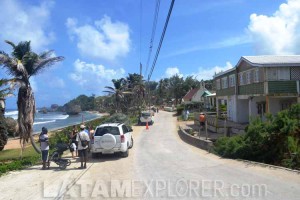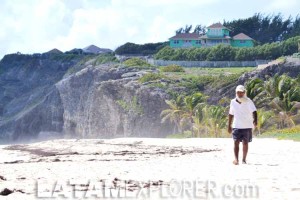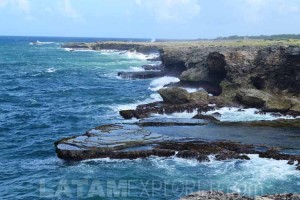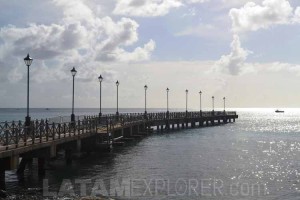Home > Destinations > Caribbean Islands > Barbados
Barbados
Barbados is a small island located on the easternmost part of the Caribbean, in the Lesser Antilles. Independent since only 50 years ago, it still preserves strong links to its former colonizer, the United Kingdom: cricket is the main sport here, the afternoon tea is still a tradition and several British buildings from the 18th and 19th centuries survive around the island.
The country’s capital and largest city, Bridgetown, was founded on the first half of the 17th century by British settlers. Nowadays, with a population of 110,000 inhabitants (about 40% of the island’s total), it is not usually the main reason why visitors chose to spend their holidays around here. Despite not being particularly attractive, Bridgetown offers a few attractions for those with some time to spare. St. Michael’s Cathedral, for example, is the symbol of the Anglican Church in Barbados. The Synagogue, originally built by Brazilian Jews in 1654 and rebuilt in 1833 is one of America’s oldest. The Parliament is located in a neo-gothic building and is open for walk-ins when no sessions are in progress. For sports, there is no better option than watching a cricket match at the Kensington Oval.
In Bridgetown’s northern end, Mount Gay distillery is a classic (this is the oldest rum distillery still in use). Those interested in getting familiar with the production process of this iconic Caribbean spirit can take a 45min tour through the visitors’ center that includes tasting. Enthusiasts can also book a free tour through the real plant, located in the countryside. South of the city, Garrison Savannah is where the country’s independence was declared in 1966, on a place currently used for horse races.
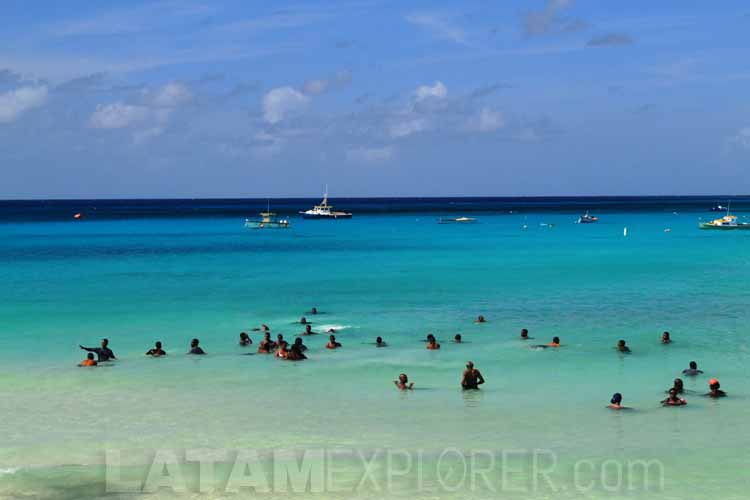
More often than not, the Barbadian sea is calmer on the island’s west side, where it is usually better to swim, practice snorkel or dive. The east coast, with rougher waters, is better for surfing. The list of the best known beaches of the country includes Carlisle, in Bridgetown, Miami Beach, Dover Beach, Foul Bay and Crane Beach, in the south, and Bathsheba, a surfers’ paradise, on the east coast.
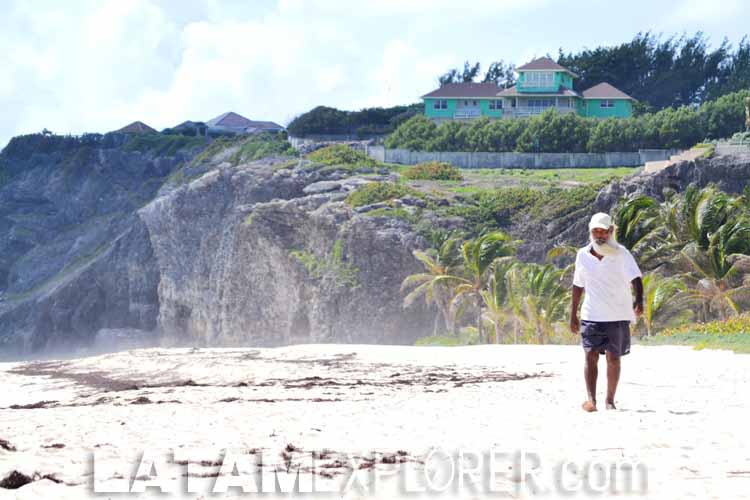
The cities of Holetown, where the first British settlement in the island was established, and Speighstown, once Barbados’ main port, are both reached heading north along the coast from Bridgetown. Further north, North Point allows visitors to be in touch with a natural setting that differs from the rest of the country. There, in the northern tip of the island, one could stay for hours observing the roar of the waves colliding with vertical limestone cliffs.

In spite of having several marvelous beaches, Barbados’ greatest beauty lies in the interior of the island. It is highly recommended to rent a car or, at least, take a tour in order to visit some of the attractions further away from the coast. The better known among them, Harrison’s Cave, attracts a large number of visitors curious to know one of the most interesting cave systems in the Caribbean. Cherry Tree Hill is another natural attraction: it features a nice viewpoint with extensive panoramic views over a large portion of the island’s east. Nearby, Morgan Lewis is the only intact wind mill in Barbados and one of only two in the Caribbean. This place presents an exhibit of equipment used for sugar production during the colonial era. Still around there, surrounded by sugar cane plantations, the St. Nicholas Abbey (which has never really been an abbey) is architecturally attractive and houses an exhibit featuring its ancient furnishings, its vapor mill and the distillery currently used to produce the local rum. Finally, the St. John’s church rewards visitors with one of the broadest panoramic sights in Barbados. Besides, the history of this gothic church, which happens to be one of the oldest in the country, attracts both locals and tourists that also come here to see the small local graveyard.

Barbados is easily accessible through its airport, connected to the US, Brazil, Europe, and to several Caribbean islands, like Saint Lucia and Antigua. Besides that, Bridgetown’s port welcome dozens of cruise ships every year, making the island a convenient stop on sailing circuits across the region. The country is not usually served by regular ferry services that could connect it to the nearby islands, as it is usual in other parts of the Caribbean.

